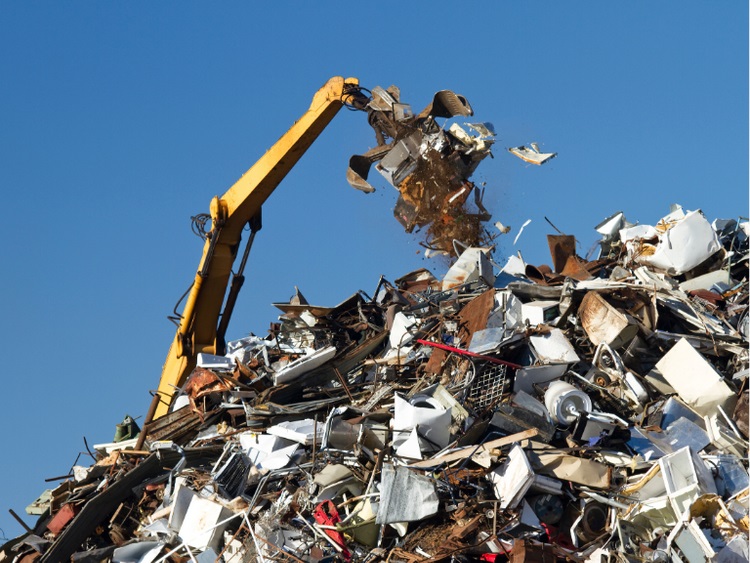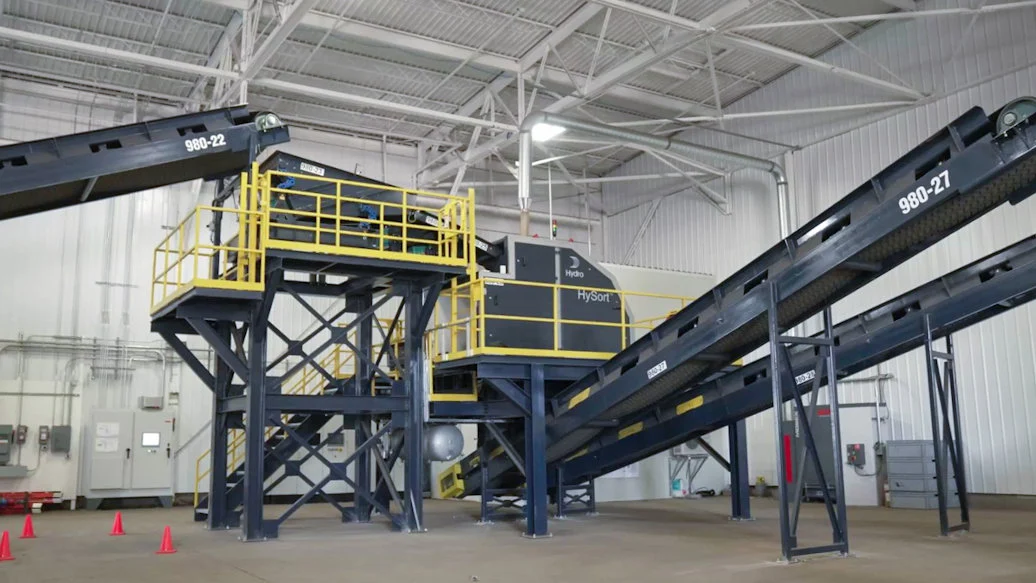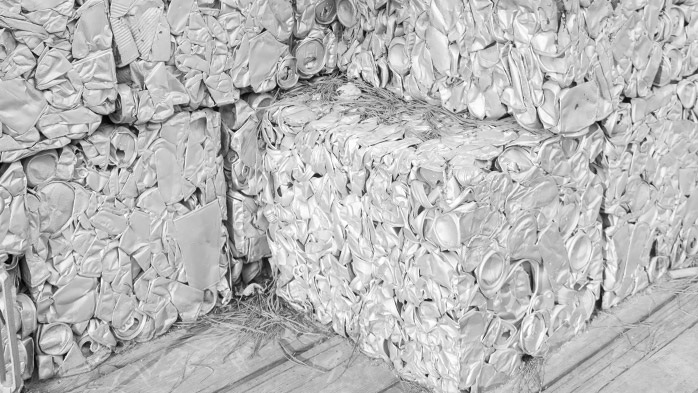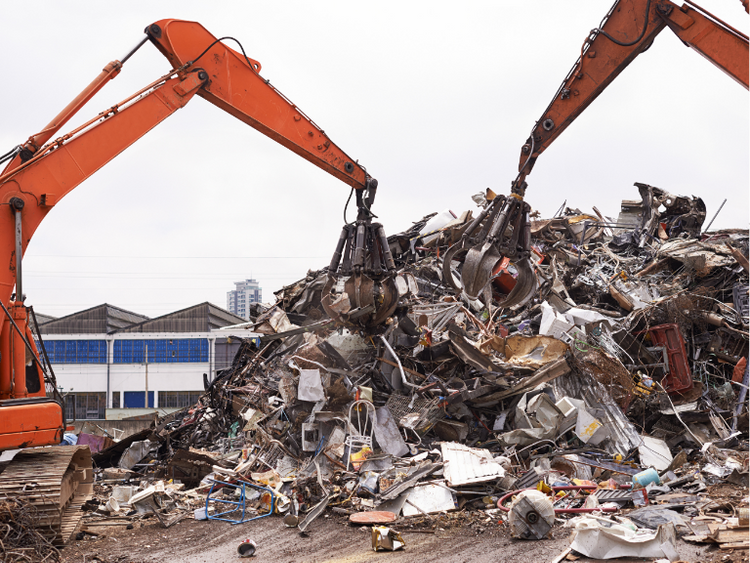Scrap Processors

June 13, 2024
CRU: Midwest premium unchanged this week; aluminum emissions stay flat as production grows, and more
Written by Guillaume Osouf
European ingot premiums unchanged for third week in a row
This week, both the Rotterdam ingot duty-paid and duty-unpaid premiums were left unchanged at $330–350/t and $250–270/t, respectively. The German billet premium was also assessed unchanged at $570–590/t.
European ingot premiums are now stable for the third week in a row and the CME forward curve in backwardation indicates we may have reached a ceiling for now. Nevertheless, we still see more upside to the premiums in the coming weeks.
Container freight rates are increasing, with market feedback suggesting routes from Port Klang to Rotterdam have increased by close to 70% since last month. Furthermore, stocks in Rotterdam, although at a comfortable level currently, are dropping fast; and we hear metal is still being shipped to south of Europe to offset tightness. This is also increasing the trucking cost as we hear demand for transportation within the continent is also strong. All of these factors need to be reflected in the premium and we expect it to continue trending higher in the coming weeks.
As for the competition with other regions, MJP is still being offered at high levels, up to $190/t. The latest shipment data suggests demand in Japan is improving, port stocks are down from last year and freights also in Asia have become more expensive. If MJP was to end at this high level for Q3, the European premium would need to increase further to attract metal, there is little doubt of that.
US Midwest unchanged this week as market focuses on macro data
The Midwest premium traded in a range between 19.9–20.4 ¢/lb this week, unchanged from last week, with the July forward date trading at 21.5 ¢/lb and Q4 trading at 22.5 ¢/lb.
There has not been much activity on the spot market this week as the market digested updated CPI, unemployment numbers and Federal Reserve reactions to inflation pulling back in May 2024, with CPI declining to 3.3% y/y from 3.4% y/y in April. The unemployment rate for May was 4.0%, up from 3.9% in April. While noting modest further progress toward the 2% inflation target, the Federal Reserve officials have decided to hold rates steady, with one rate cut likely in 2024.
There was an uptick in domestic shipments of flat rolled products, showing a 6.4% y/y YTD improvement, led by beverage can sheet shipments, up 9.8% y/y YTD. There was also a surge in request for quotations in the beverage can sheet market as a likely response to impending section 301 tariff actions against Chinese imports. This – coupled with prior trade actions on Section 232, AD/CVD cases, Mexico tariff actions and overall tightness in scrap supply – continues to create bullish momentum on Midwest premium.
Japanese end users bid $155/t for MJP Q3
The spot premium in Japan was in a range of $140–150/t this week, unchanged from last week.
The negotiations for MJP Q3 premiums continued this week. One producer maintained its offer at $190/t for MJP Q3 premium, while the other producer continued with its offer at $175/t. Market participants indicate end users/trading houses would like to bid $155/t for the premium, which is slightly higher from the levels of $145–148 /t that settled for MJP Q2. However, no transactions have been concluded at the time of writing.
The inventory edged up due to the continuous weakness in aluminum demand in Japan, especially from the automotive sector. According to Marubeni’s latest data, the inventory of primary aluminum at main Japanese port warehouses totaled 308,700 t by end May, which is 600 t higher from the level of 308,100 t seen in end-April.
The spot premiums in South Korea were in a range of $125–135/t this week, unchanged from last week.
IAI reports on GHG emissions from the global aluminum industry
A recent LinkedIn post by the International Aluminum Institute (IAI) pointed out that total emissions from the global aluminum sector did not grow, even though aluminum production increased.
The latest available 2022 data for IAI shows that aluminum production grew by 3.9% from 104.1 million tonnes to 108.2 million tonnes. However, greenhouse gas emissions from the industry showed a slight decline from 1.13 giga-tonnes CO2e to 1.11 giga-tonnes CO2e, and the GHG emissions intensity of primary aluminum production (the average quantity of emissions from the production of a tonne of primary aluminum) has been declining since 2019. In 2022, intensity declined by 4.4% from 15.8 tonnes CO2e per tonne to 15.1 tonnes CO2e per tonne.
IAI Secretary General Miles Prosser said: “The 2022 data shows the effectiveness of work by the aluminum industry to reduce the emissions intensity of production. While much remains to be done, 2022 was the first year that these intensity reductions offset production growth,” before adding: “If we continue to see investment and implementation of low-carbon energy sources and GHG reduction technologies, 2021 could be the year that GHG emissions from the aluminum industry peaked.”
The IAI has tracked more than 50 projects across the global industry that are contributing to this trend, in all the major production regions and addressing all the required technology pathways.
Queue at ISTIM in Port Klang surges to 159 days, LME data shows
According to the latest LME data for warehousing queues, the number of days to take metal out of ISTIM in Port Klang increased from 0 in April to 159 days in May. This queue originated from the large deliveries seen in May and the subsequent equally large cancellations that followed.
Before the deliveries first took place May 9, the amount of canceled warrants amounted to 70,625 t. The latest data shows a total of 498,775 t, or an increase of 428,150 t in just over one month.
The queue also results from the current load-out rate rule which stipulates that the minimum daily load-out tonnage for a warehouse like ISTIM is 3,500 t. The minimum amount cannot exceed 4,000 t for a warehouse that would store 900,000 t and more of aluminum. The latest LME data for May shows that ISTIM has a total of 862,110 t, of which 403,735 t is live and 458,375 t is canceled.
EGA launches Green Finance Framework
This week, EGA published its Green Finance Framework to support decarbonization projects and initiatives. The company also revealed its recent acquisition of European specialty foundry, Leichtmetall, was fully funded with EGA’s first green loan facility.
A green finance framework defines eligibility and governance mechanisms for financing from third-party institutions and funds that prioritize sustainability in their capital allocation, among other sources. Publishing the framework advances EGA’s sustainability goals by enabling access to a more diverse range of funding options for loans and bonds, potentially lowering the cost of borrowing while ensuring increased transparency. Citi and ING have been acting as the lead sustainability structuring banks and First Abu Dhabi Bank (FAB) as the sustainability structuring bank to support EGA in the framework’s development.
EGA completed the acquisition of Leichtmetall in May. Leichtmetall uses renewable energy to produce up to 30,000 tonnes per year of aluminum billets at its plant in Germany, with secondary aluminum comprising some 80% of the input material.
To learn more about CRU’s services, visit www.crugroup.com.





